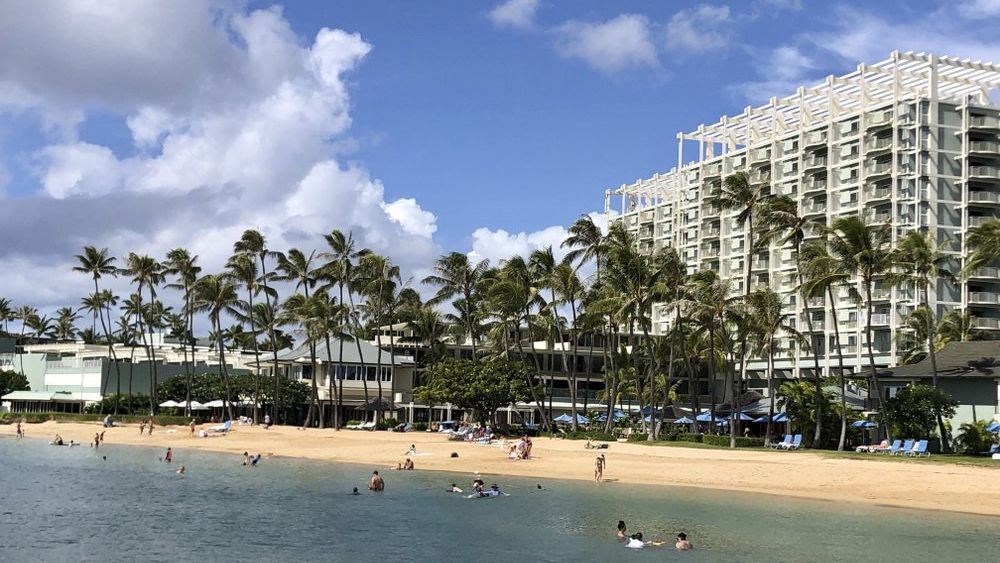The Department of Business, Economic Development and Tourism has lowered its 2022 and 2023 economic growth projections for Hawaii due to declining investment caused by increases in interest rates and inflation.
In its third-quarter 2022 Statistical and Economic Report, released on Wednesday, DBEDT projected the state’s economic growth at 2.6% in 2022 and 1.7% in 2023.
The previous second-quarter report projected growth at 3.2% in 2022 and 2.5% in 2023.
The revised projections are still higher than national economic growth projections of 1.5% for 2022 and 0.7% in 2023 made by the top 50 economic forecasting organizations and published in Blue Chip Economic Indicators in August.
“The state’s economy has performed well during the first seven months of the year,” said DBEDT director Mike McCartney. “As of July 2022, compared to 2019 (seasonally adjusted numbers), our labor force recovered 98.9 percent, employment recovered 97.3 percent and payroll jobs recovered 93.1 percent. Our daily visitor count recovered at 91.9 percent.”
McCartney said the state faces challenges — the slowdown in construction and real estate activity; the labor shortage; worldwide inflation due to supply chain interruptions due to energy price increases; the ongoing pandemic; and slowing economic growth worldwide — ”will all impact our recovery progress and add uncertainty to our economy and our daily lives.”
McCartney added that the impact to Hawaii will probably be less than to the rest of the world’s economies.
The report noted that the tourism industry continues to recover. Some 5.4 million visitors came to Hawaii in the first seven months of 2022, representing 86.8% recovery from the same period in 2019. U.S. visitors were 12.4% higher than those who came during the same period in 2019. International visitors recovered 33.8% with Canadian visitors leading the recovery at 63.3%, Japanese visitors at 6.7%, and other international visitors at 52.4%.
Through July 2022, visitor spending totaled $11.2 billion, representing a 5.8% increase over spending during the same period in 2019, DBEDT reported.
As currently scheduled, total air seats during the September to November 2022 period will recover 99% from the same period in 2019, according to DBEDT. Seats from the U.S. mainland will be 12% higher and seats from international airports will recover 66.4% as compared with the same period in 2019. Future flights from Japan are planned to recover 55.6% of the 2019 level during the three-month period.
According to the report, labor market conditions continued to improve through the first seven months of 2022, with unemployment rate at 4.2% seasonally adjusted and 3.7% not seasonally adjusted.
Over the same seven-month period, state general fund tax revenue hit $6 billion, a 35.1% increase over the same period in 2019.
Meanwhile, construction activity and home sales have declined, DLNR reported.
During the first four months of 2022 construction increased 6.7% mainly due to the 20.5% increase in the value of private building permits and 66.9% increase in the value of government contracts awarded in 2021. As DBEDT noted, it normally takes a year to start construction payments after building permits are granted, however, the value of private building permits declined 30% during the first half of 2022. Construction payroll jobs also decreased 2.7% in the first half of 2022.
Through the first half of 2022, there were 11,914 homes sold statewide, a 5.5% decrease from the same period in 2021. The average sales price for single-family homes in the first half of 2022 was $1,113,242, representing an 8% increase from the first half of 2021. The average sales price for condo homes was $717,868, an increase of 9.7% from the same period in 2021.
Of the homes sold during the first half of 2022, 8,833 units or 74.1% were sold to local buyers and 3,801 units or 25.9% were sold to out-of-state buyers. Of the homes sold between 2008 and 2021, 25% of them were sold to out-of-state buyers.
Inflation in the Honolulu area, as measured by the Consumer Price Index for All Urban Consumers, averaged 6.8% during the first seven months of 2022, the highest since 1991. However, there was a downward trend from 7.5% in March to 7% in May and 6.8% in July. The increase in inflation was partly driven by energy prices, which jumped 35.6% due to an increase in crude oil prices. Supply chain disruptions also contributed to the higher inflation rate with an increase for commodities in Honolulu at 12.2% in July 2022.
DBEDT predicted the ongoing war in Ukraine and rising tensions in Asia and the Middle East will further impact the supply chain further and drive-up inflation, especially the construction costs that affect the building of high-rise buildings.
Despite all, the state is projected to exceed $100 billion in GDP in 2023 for the first time.
Michael Tsai covers local and state politics for Spectrum News Hawaii.




